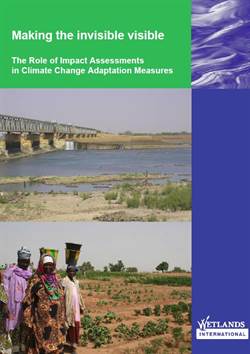
Making the invisible visible: The Role of Impact Assessments in Climate Change Adaptation Measures
This paper highlights the need to incorporate Ecosystem-based Adaptation approaches as vital components of adaptation strategies. It also calls for the establishment of mechanisms that help to avoid adverse environmental impacts resulting from well-intended adaptation projects, which in the long run might lead to mal-adaptation.
Impact and vulnerability assessments are practical tools that can help to make invisible environmental services visible, and therefore help to judge how ecosystems can contribute to climate resilience. They can be applied throughout the adaptation planning cycle.
What do we mean by making the invisible visible?
For a very new issue such as climate change adaptation, solutions can remain elusive once problems are identified. Especially in addressing climate change impacts, it is important that at the earliest stages, the wide range of options for adaptation are considered and compared for both their positive and negative impacts. Unfortunately, this strategic analysis is not uniformly performed yet by authorities or demanded by donors.
Wetlands and other ecosystems make powerful contributions to increasing resilience to climate change through their role in the mitigation of floods and droughts, protection against storms and prevention of erosion, among other functions. Many of these environmental services are not directly visible or known and therefore overlooked when no proper assessment of these and other options is carried out.
Thus Wetlands International calls for the adoption of (strategic) impact assessment tools as mandatory elements of proposals that are submitted to the Adaptation Fund. We believe that full assessment of costs and benefits of different adaptation strategies—including those related to ecosystem services—is crucial to prioritize actions and reduce costs. It also offers a mechanism that aids the development of integrated and complementary adaptation approaches.

